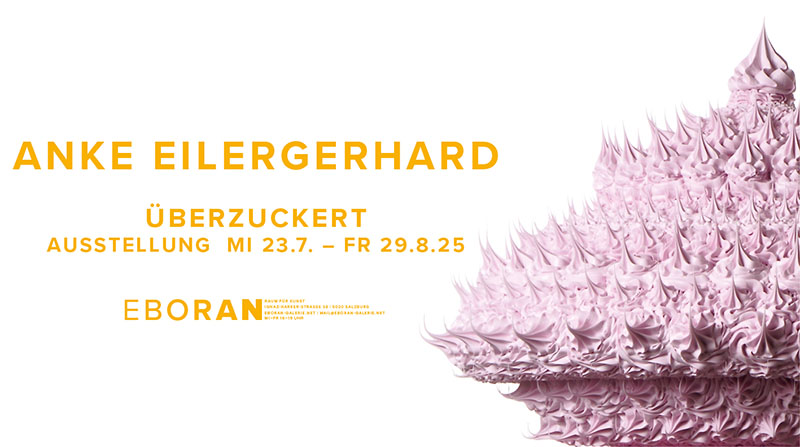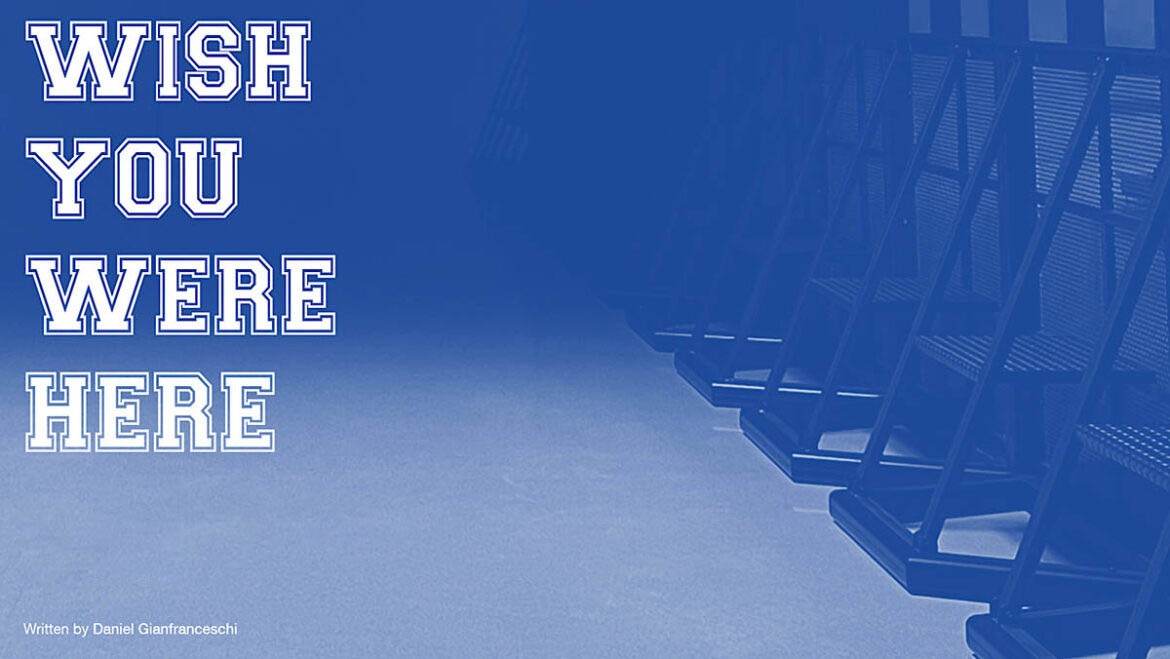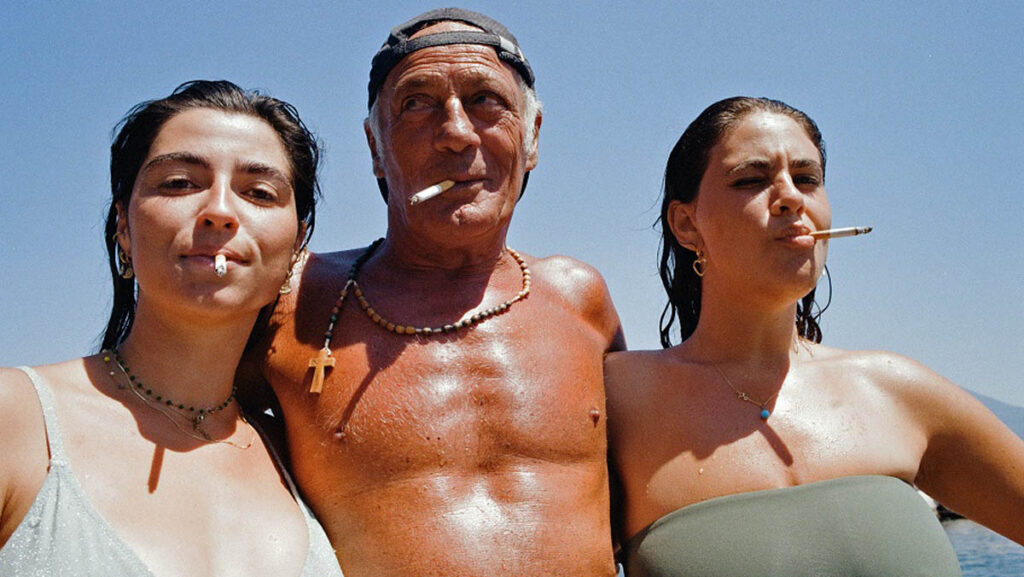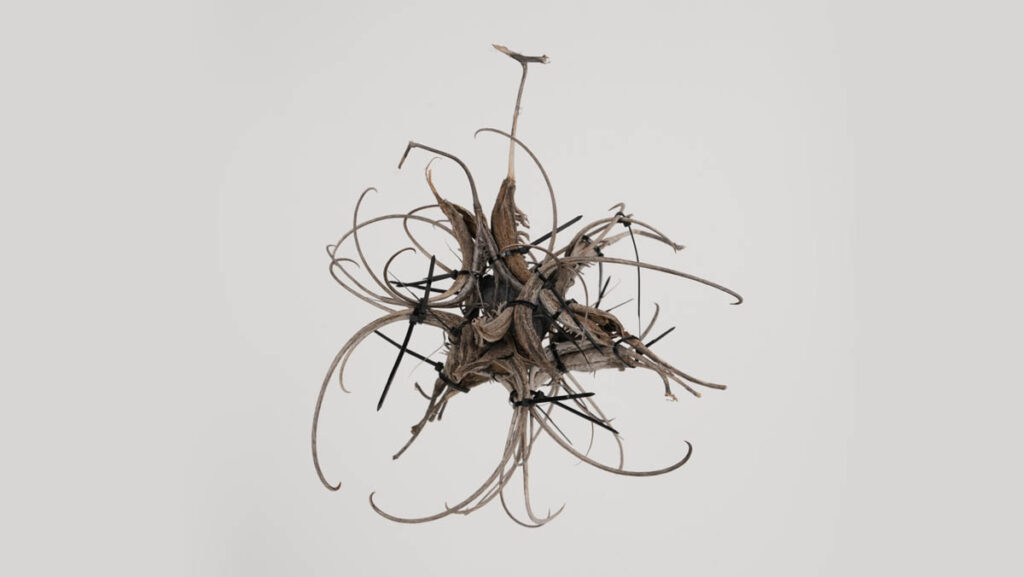If, instead, the goal was to create, as assumed in many press-related statements, a holistic and atmospheric parallel world – the world of the Anne Imhof coming from nightclubs, punk, metal, and discordant youth culture perpetually usurped to create an aesthetic for aesthetics’ sake – then the position assumed by Imhof in the Kunsthaus’s architecture does, in fact, attain a physical presence, especially on the top floor – adorned with a flooring-system reminiscent of concert stages and a PA system scattered into its many parts along it, echoing the luminous quality of youthful energy and the vigor and DIY-attitude of onset adolescence – but even the most potent of feelings and impressions are fleeting at best.
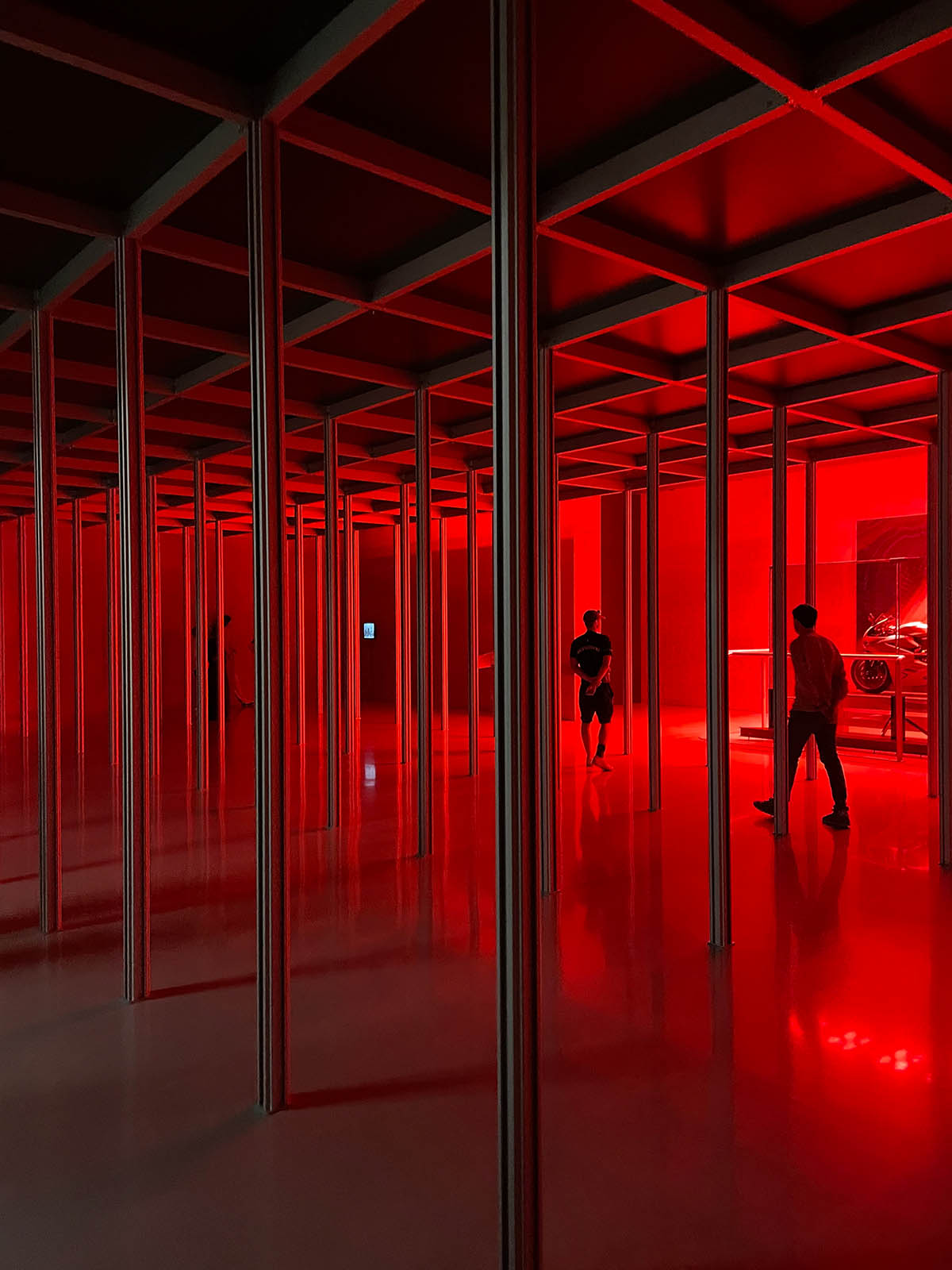
Unlike FAUST (2017) or SEX (2019), “Wish You Were Gay” (2024) sets Imhof at center stage – a position the artist has willingly negated in the past so as to not give in to the personality cult that plagues modern art world – and perhaps for the worst, exposing the parts that in other installations would be recognized as flaws, were it not for the performative aspect of them. The Kunsthaus, even when negated, exudes a power over the installation (and, frankly, all exhibitions in that space) that is only seldomly contrasted. In a way, it feels like the exact opposite of what was, presumably, the goal. “Presumably” because there are, in fact, fragments of the vision in its totality: the modified stage-barriers that serve as an invitation to rebel and are, as advised by staff of the museum, definitely not made for sitting on them, the glass chambers, augmented by graffiti that looks a little too perfect and the constant juxtaposition of various found objects that have shaped Imhof’s oeuvre. They are all there, yes, but they fail to convey any emotional response other than it might look good on a digital screen, photographed, frozen in time. What actually makes Imhof such a standout in the modern art world is how ephemeral, fragmented yet cohesive all her presentations are, which begs the question: what feeling remains when all you were just perceiving – visually or on a stimulatory level – can be encapsulated by one photograph? Isn’t the precise point of conceiving an exhibition as an atmosphere the temporary quality of it?
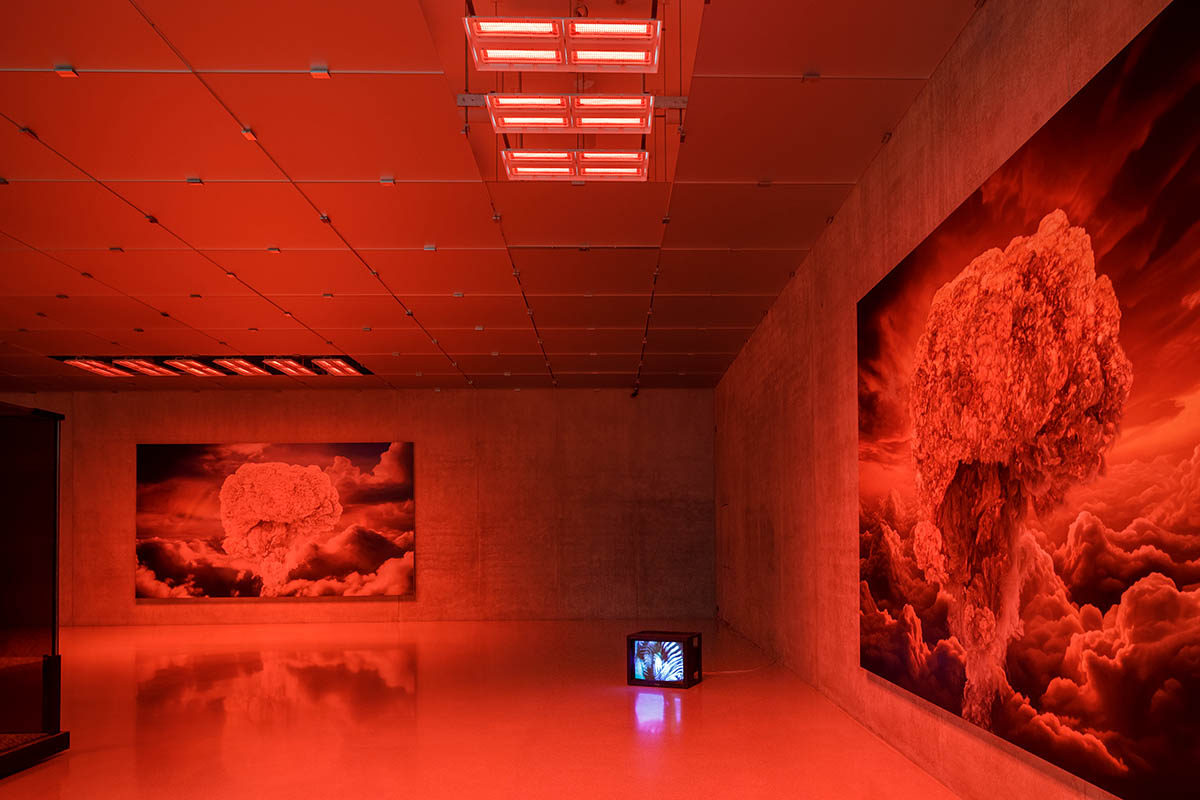
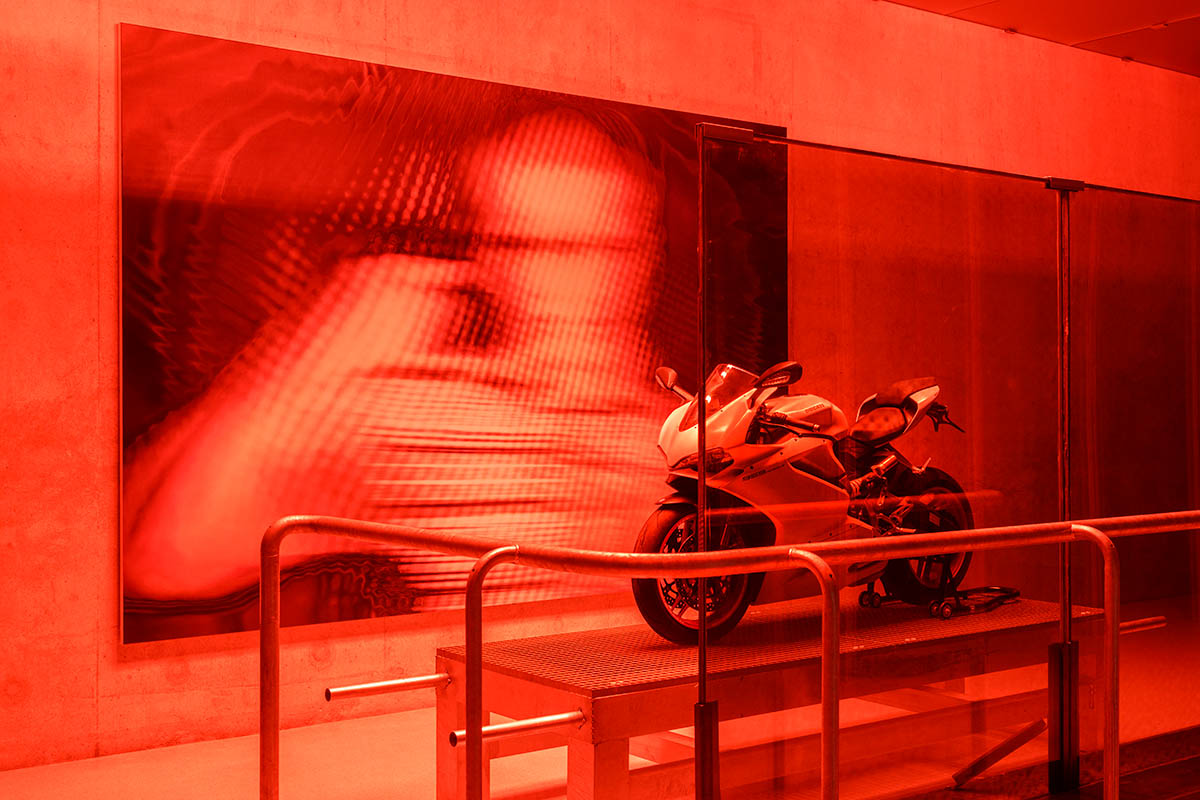
So, if all singular objects/ artworks are valid, how come they fail to resonate onwards, beyond the exhibition? Where do they fail? Well, they fail in as much as the stage that is being set for us feels (probably decidedly) artificial, with no compass to lead us in the right direction and, most infuriatingly, no explanatory statements. Even the small paperback publication, dedicated to the exhibition, is devoid of any piece of writing that might help us understand the exhibition better. This, of course, was more than intended, yet the snark attempt at mystification through negation of subtext is, arguably, the exact opposite of the punk spirit Imhof seems to be holding onto. Sure, in the early days of punk and hardcore, one would be visiting shows in the most peculiar of settings and perhaps buy a 7-inch by some obscure band that would last no more than one summer and with little to no credits on the vinyl’s back, but the setting in which we find Imhof today is drastically different, intellectualized through every crevice and every concrete debris. The stage that is being set is, at best, a facsimile and at worst a mere attempt at forcing out an impression from the audience, for as soon as we deconstruct its many parts we will soon find that the one, solitary stage-barrier in the entrance hall feels more out of place and less like an invitation to riot or rebel and the (assumed, for there is no way of knowing if it actually is one) drawing behind it, anticipating the casted sculptures reminiscent of Jugenstil aesthetics of splendor, feels weightless and dull.
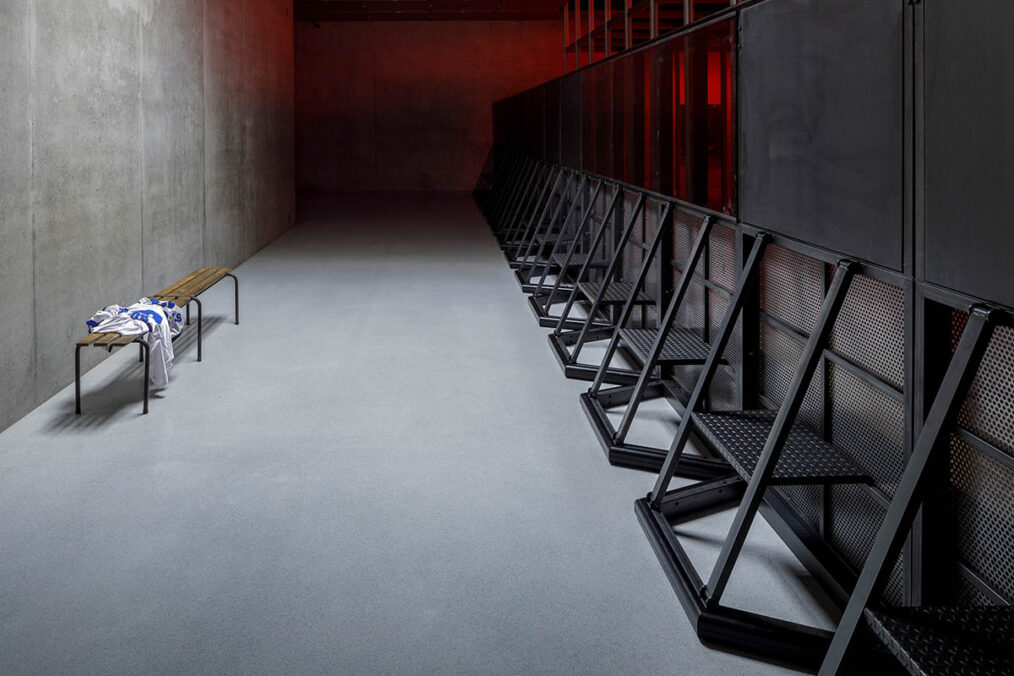
The highlight of the show would need to be the big video work projected onto the entrance’s hall, in which Imhof is seen having a faceoff with the camera, in a boxing match that blurs the lines between intimacy, audience, and participating auteurs. Yet, even in this wonderfully intimate display of vulnerability through a relatively aggressive act, the audience member suddenly becomes enveloped in a fight that is neither their own nor is there a specific reason for it. Imhof positions herself as almost “wanting” to have a faceoff with the audience that is, in turn, left feeling relatively little. This too – an act of rebellion – is subdued by how sterile everything feels, almost in-human, in a way. The glass chambers featuring a makeshift bed are inaccessible and the labyrinthian infrastructure of each floor offers neither a claustrophobic quality ala Bruce Nauman, nor does it feel maximalist and monumental, for its size and dimensions are perfect as a backdrop for everything else that seems to be so eager to happen, yes, but not made for inducing a particular kind of phenomenology ala Richard Serra. Instead, the architectural elements like the lowered ceiling, the red lights, and the barricades feel more like pieces of visual merchandising that would fit perfectly into the boutiques of the likes of Balenciaga and whatnot. The Kunsthaus offers a wide array of “merch” featuring college-eske logos sporting the exhibition’s title. Imhof’s closeness to the fashion industry is hereby aptly conveyed – and the idea itself is wonderful, albeit not a new one if we think of Keith Haring or Helmut Lang, but one that surely appeals to a younger audience, something museums all around the world need more of – but we must ask the question, at what cost? Lazy screen printing and upselling a product for ungodly amounts, especially if we consider the production cost to be rather low (which is a supposition for the most part but definitely not for the Flexifit caps, retailing between 85 and 120€ and costing, in production, probably one-tenth of the actual retail price), is no different than fast fashion’s plan for overconsumption coupled with a bit of Instagram-Influencer energy. This might be the actual target group of such products. The question remains: why waste such a good opportunity for a product that is drastically overpriced and under-designed?
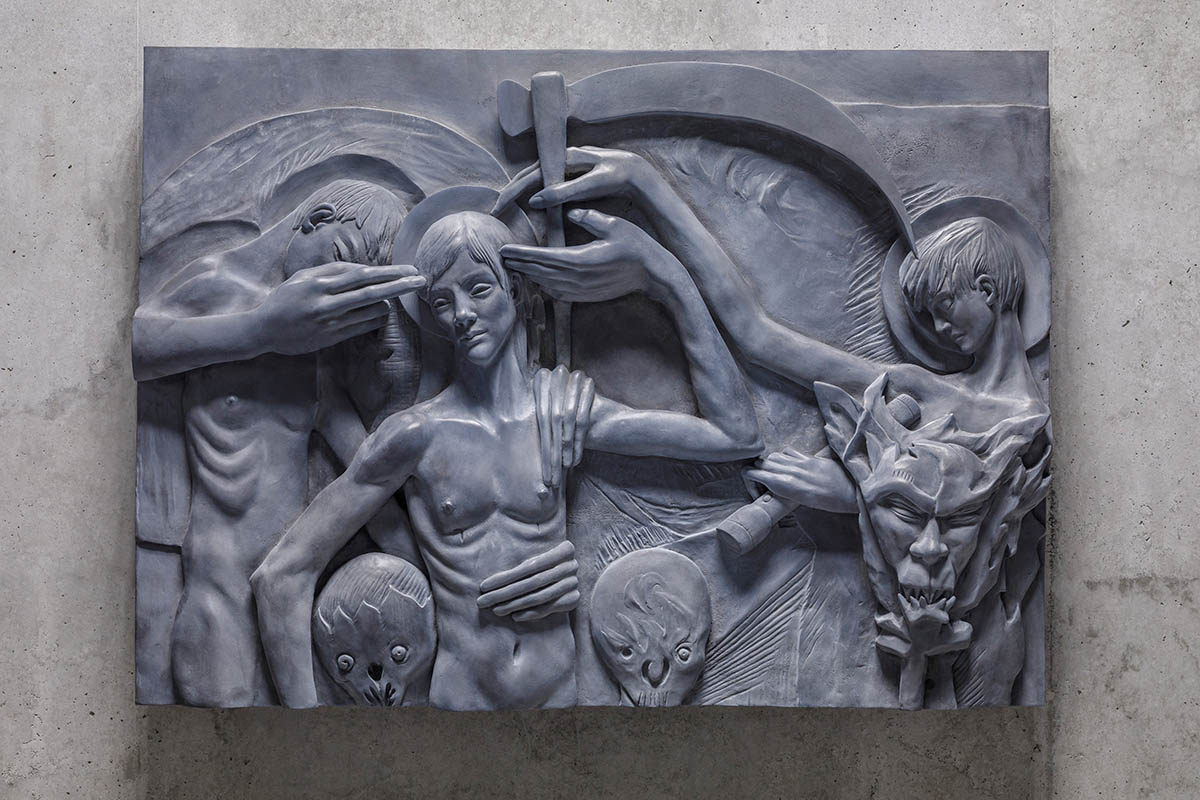
Strangely, in a show that rather accentuates the personality fetish, what is missing is Imhof herself, in all its punk glory, youthful aggression, and anti-authoritarian methodic. Every work presented, even in its totality, feels like it barely scratches the surface of an oeuvre that goes much deeper into queerness, performance, underground cultures, and symbolism than the banal and nearly offensive act of placing a motorized vehicle onto a metal pedestal. If the glorification of the motorcycle as an object also inherent in the through the title referenced movie, “My Own Private Idaho” is meant to be a stand-in for notions of escapism, freedom, lust and an underlying vulnerability, it fails to convey any sense of urgency through the sheer objectification, rending it less Duchampian and more capitalistic. The sentiment that all this serves to subvert the structural integrity of the Kunsthaus Bregenz is everything but subtle yet fails to convey any authenticity, for to truly subvert anything in modern art means to tear at the fabric of the system one is, inevitably, still working within. There are many potentially interesting ideas here at play, but they fail to be woven together to create a holistic whole. Instead, the intently sterile make-shift architecture Imhof constructs within the beloved concrete-block does nothing other than echo the coldness of the ladder, rejecting the audience completely and creating a landscape of installations that feel contrived, forced, and seldomly believable.
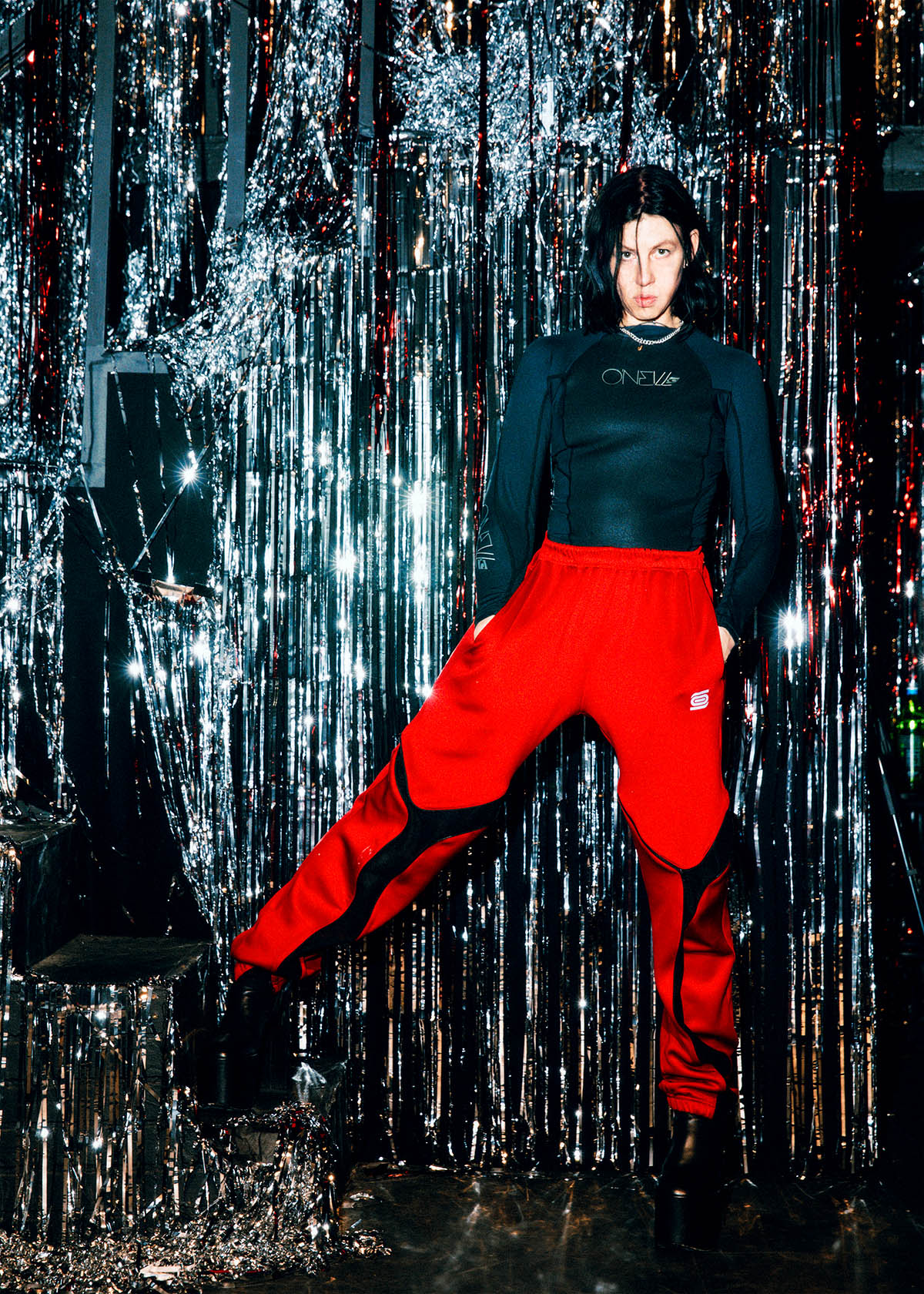
Exhibition: Anne Imhof – Wish You Were Gay
Exhibition duration: 08.06 till 22.09.2024
Address and contact:
Kunsthauses Bregenz
Karl-Tizian-Platz, 6900 Bregenz, Austria
www.kunsthaus-bregenz.at
Daniel Gianfranceschi (1999, living and working between Munich and Bardolino) is a multidisciplinary artist working within the realms of painting, sculpture, text and sound. Gianfranceschi previously studied fashion management under Prof. Sabine Resch & Prof. Markus Mattes and is now continuing his studies in painting and sound at the Academy of Fine Arts under Prof. Florian Pumhösl & Prof. Florian Hecker. The focus is to explore philosophical questions, which are reinforced by the choice of colors and materials. To create more with less. Natural materials and seemingly simple compositions as a means to reduce everything, to make chance susceptible to the smallest of changes. To transcend the body and create a symbiotic moment of pure intuition. A „wabi“ and Zen way of thinking, a sort of silent painting, asking questions. A notation of compositional elements as if each work where in constant dialogue with those around it. Allow and welcome imperfections, to learn to appreciate them as they are. Gianfranceschi’s practice is strongly influenced by literature, music, film and nature, posing questions rather than wanting to solve problems. A minus was of thinking. All the while, the artist’s writing practice is ever expanding, ranging from guest writing spots for Sleeve Magazine or Zwischentexte to interviews with creatives of all kind, published through the self-funded online blog “Subject Change”, including future interviews with the likes of François J. Bonnet, Boris Bidjan Saberi, Meo Fusciuni, Stephanie Stein and many more. www.subjectchange.tumblr.com, www.instagram.com/subjectchange.pdf



